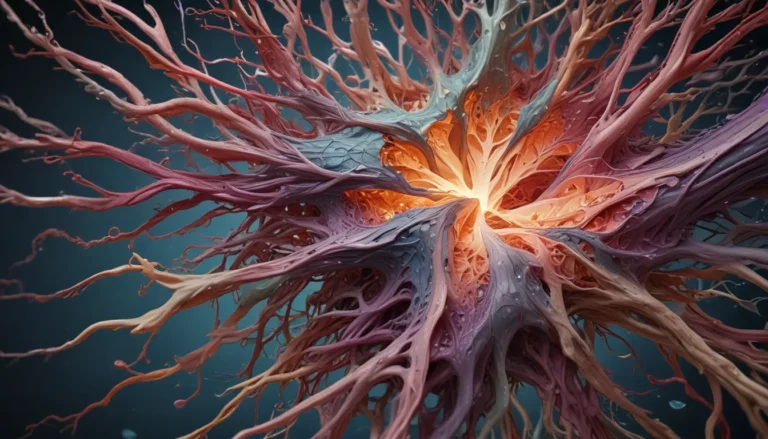A Note About Images: The images used in our articles are for illustration purposes only and may not exactly match the content. They are meant to engage readers, but the text should be relied upon for accurate information.
Are you ready to embark on a journey into the captivating realm of light-independent reactions? These extraordinary processes, also known as the Calvin Cycle or the dark reactions, are an indispensable part of photosynthesis, enabling plants to generate energy from sunlight. In this article, we will unveil 13 astounding facts about light-independent reactions, shedding light on their importance and intricacies. Join us as we explore the fascinating world of plant biochemistry and discover the secrets that lie within these often overlooked reactions.
Understanding the Power of Light-Independent Reactions
Light-independent reactions, also referred to as the Calvin cycle, play a pivotal role in the synthesis of organic molecules in plants. Despite their name, these reactions do not directly rely on light energy but utilize the products of light-dependent reactions to convert carbon dioxide into essential sugars.
Powerhouse of Carbon Dioxide Fixation
One of the primary functions of light-independent reactions is the fixation of atmospheric carbon dioxide into organic compounds within the plant. This crucial process transforms an abundant gas into valuable organic molecules that fuel the plant world and the entire food chain.
Enzymatic Facilitation of the Calvin Cycle
Central to the Calvin Cycle is the enzyme Rubisco, which kickstarts the carbon fixation process by catalyzing the reaction between carbon dioxide and ribulose-1,5-bisphosphate. This enzyme serves as a driving force for the conversion of carbon dioxide into useful organic compounds.
Dynamic Utilization of Energy Carriers
During light-independent reactions, adenosine triphosphate (ATP) and nicotinamide adenine dinucleotide phosphate (NADPH) produced in the light-dependent reactions are consumed to power the synthesis of organic molecules. These energy carriers play a vital role in the conversion of carbon dioxide into sugars essential for plant growth.
Complex Sugar Synthesis Pathways
Through a series of intricate enzymatic reactions, light-independent reactions transform carbon dioxide, ATP, and NADPH into simple sugars, primarily glucose. This process involves multiple steps that collectively produce the energy-rich compounds necessary for plant survival.
Regulation through Feedback Inhibition
The rate of light-independent reactions is carefully regulated by feedback inhibition, where the accumulation of products acts as a signal to slow down the production process. This mechanism ensures that the synthesis of organic molecules remains balanced and efficient.
Environmental Adaptability of Plants
Plants exhibit remarkable adaptability in adjusting the rate of light-independent reactions based on environmental conditions. Factors such as light intensity, temperature, and carbon dioxide concentration can influence the efficiency of these reactions, allowing plants to thrive in diverse ecosystems.
Role in the Global Carbon Cycle
Light-independent reactions play a critical role in the global carbon cycle by sequestering carbon dioxide from the atmosphere and converting it into organic compounds. This process helps maintain the balance of greenhouse gases and sustains the life-sustaining oxygen levels in our atmosphere.
Impact of Climate Change on Plant Biochemistry
Climate change factors, such as rising temperatures and elevated carbon dioxide levels, can impact the efficiency of light-independent reactions. These environmental changes may have implications for plant growth and ecosystem dynamics, highlighting the interconnectedness of plant biochemistry and global climate patterns.
Vital Contribution to the Food Chain
Light-independent reactions serve as the primary source of organic molecules for both herbivores and carnivores in the food chain. The sugars produced through these reactions provide the energy necessary for the growth and development of all living organisms, showcasing the fundamental role of plants in sustaining life on Earth.
Storage and Utilization of Energy Compounds
The organic molecules synthesized during light-independent reactions are stored as starch or utilized to produce essential compounds like cellulose. These energy-rich molecules serve as reserves that plants can tap into during periods of high energy demand or limited environmental resources.
Nighttime Operation and Energy Depletion
While light-independent reactions can occur during the night, they ultimately rely on the energy carriers generated during the light-dependent reactions, which are powered by sunlight. Without the continuous production of ATP and NADPH, the light-independent reactions would cease due to energy depletion, highlighting the interconnected nature of plant biochemistry.
Unlocking the Secrets of Photosynthesis
The intricate dance of light-independent reactions within the chloroplasts of plants reveals the awe-inspiring complexity of nature’s biochemical processes. By understanding the mechanisms that drive carbon fixation and sugar synthesis, we gain insight into how plants harness solar energy to sustain life on our planet.
Conclusion
In conclusion, light-independent reactions are a cornerstone of photosynthesis, enabling plants to convert carbon dioxide into glucose, the lifeblood of all living organisms. These processes, occurring within the chloroplasts of plants, showcase the remarkable biochemical machinery that powers the cycle of life on Earth. By unraveling the mysteries of light-independent reactions, we deepen our appreciation for the intricate web of interactions that sustain our ecosystems.
FAQs: Exploring Light-Independent Reactions
-
What are light-independent reactions?
Light-independent reactions, also known as the Calvin cycle, are biochemical processes that convert carbon dioxide into glucose in the absence of direct sunlight. -
How are light-independent reactions different from light-dependent reactions?
Light-dependent reactions require sunlight to generate ATP and NADPH, while light-independent reactions utilize these energy carriers to produce sugars without direct light input. -
Why are light-independent reactions important?
Light-independent reactions play a vital role in providing organic compounds for plant growth, sustaining the food chain, and maintaining atmospheric oxygen levels. -
How does carbon dioxide enter the light-independent reactions?
Carbon dioxide enters the light-independent reactions through carbon fixation, a process catalyzed by the enzyme Rubisco. -
What happens to the energy carriers ATP and NADPH in light-independent reactions?
ATP and NADPH are utilized in light-independent reactions to power the synthesis of glucose by providing energy and high-energy electrons, respectively. -
Can light-independent reactions occur at night?
While light-independent reactions can occur at night, they depend on energy carriers generated during the daytime light-dependent reactions and may eventually cease without ongoing sunlight input.
Unveil the wonders of light-independent reactions and delve deeper into the fascinating world of plant biochemistry. By exploring the Calvin Cycle and its critical role in photosynthesis, you will gain a deeper understanding of how plants harness solar energy to sustain life on our planet. Join us on this journey of discovery as we uncover the secrets of carbon fixation and the intricate processes that make plant life possible.
Embracing a World of Knowledge
Our mission is to provide you with engaging and trustworthy content that enriches your understanding of the natural world. Each fact we share is contributed by individuals like you, ensuring a diverse array of insights and information. Our dedicated editors rigorously review each submission to guarantee accuracy and authenticity, allowing you to explore, learn, and grow with confidence. Trust in our commitment to quality and join us on a journey of discovery through the fascinating realms of science and nature.





